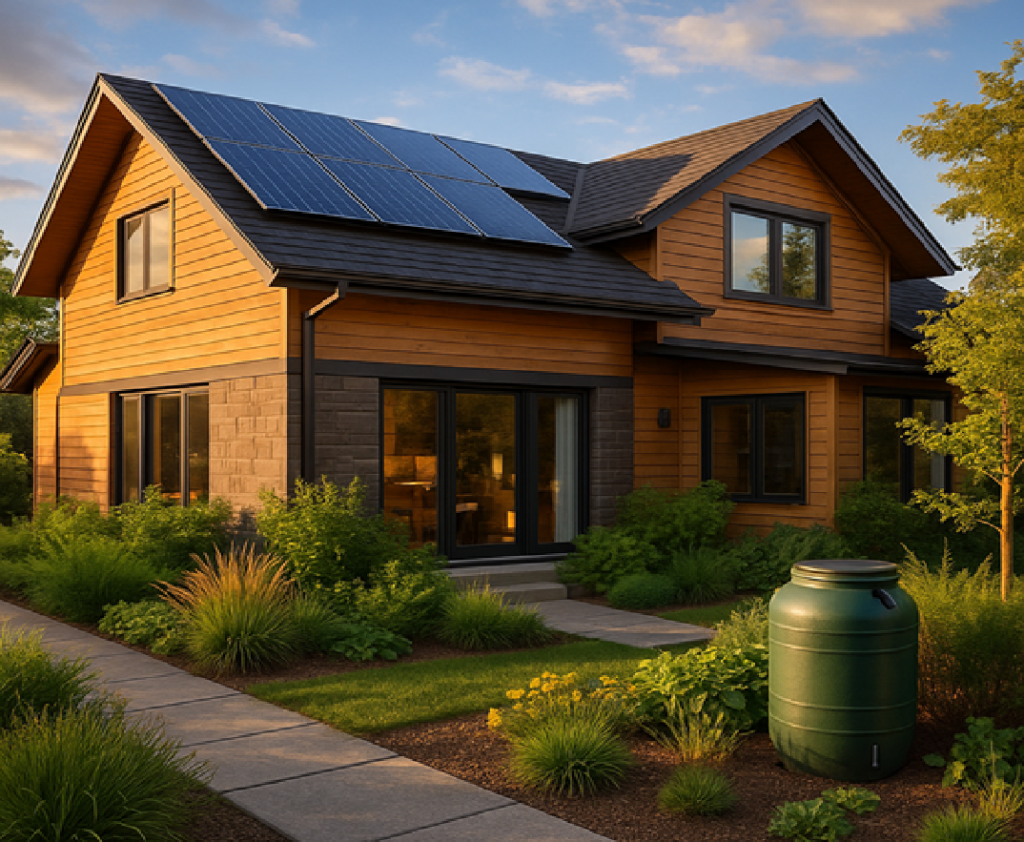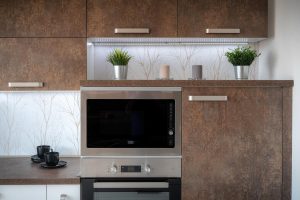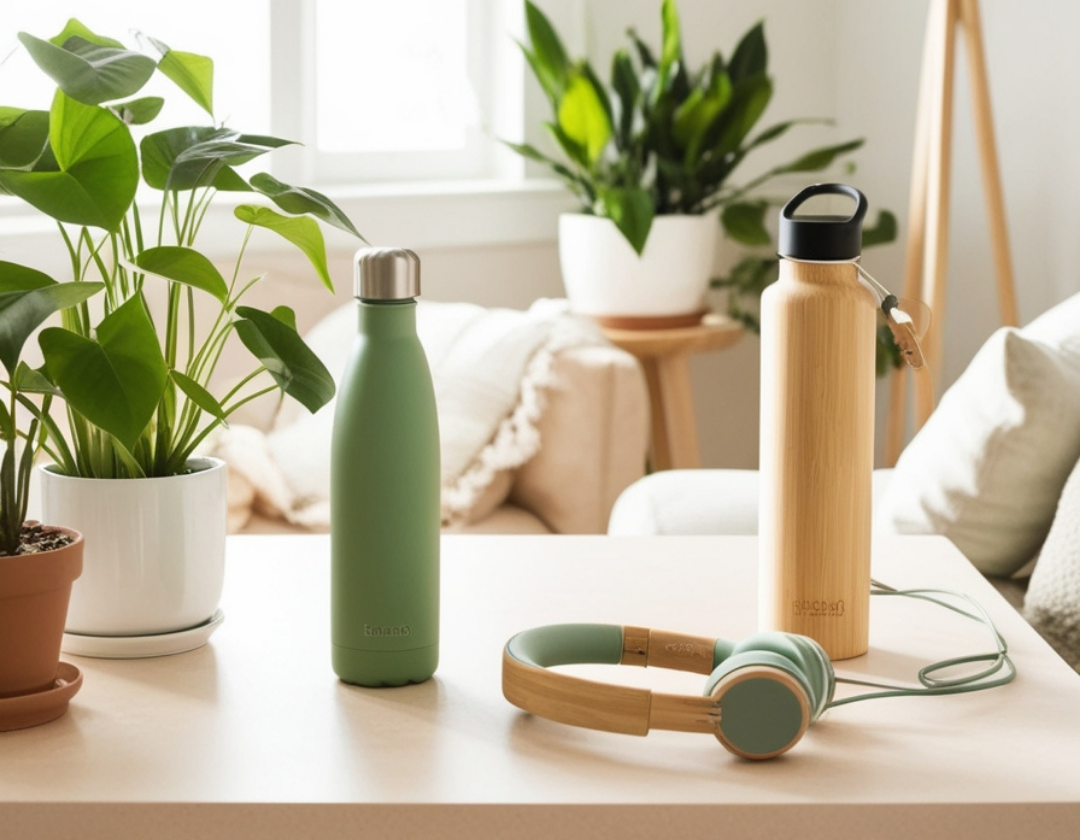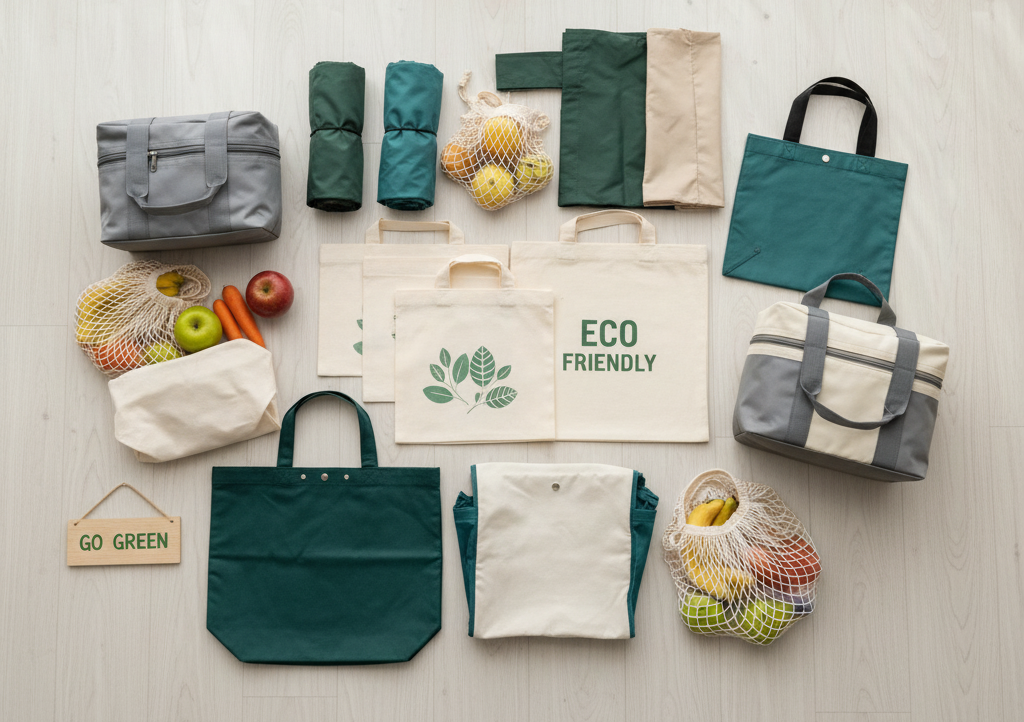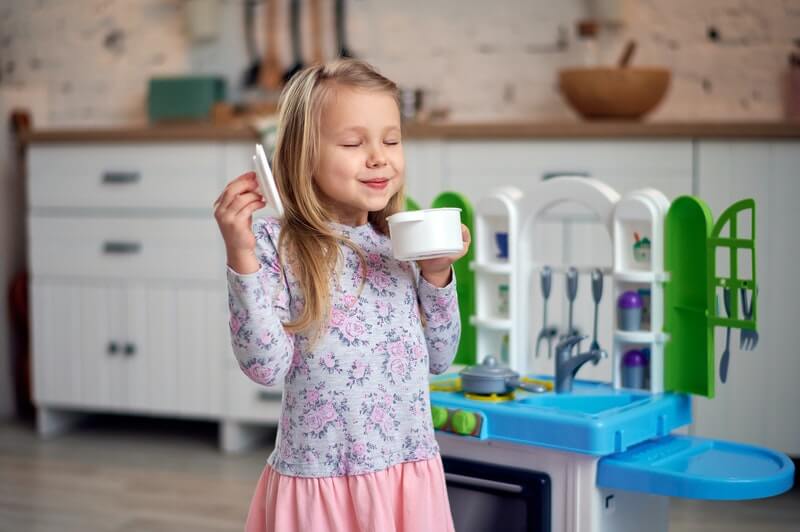Eco‑friendly home upgrades on a budget are more achievable than you might think. In fact, our homes waste about 10–20 percent of annual energy costs when they aren’t energy efficient, which can add up to hundreds of dollars a year. Here’s a list of 7 must have budget friendly eco-driven upgrades for your sustainable home;
-
- Install a smart thermostat
- Switch to LED lighting and energy star appliances
- Install Low‑Flow Fixtures to Conserve Water
- Start Composting to Reduce Food Waste
- Harvest Rainwater for Your Garden
- Furnish With Sustainable and Upcycled Materials
- Embrace Biophilic Design With Indoor Plants
If your goal is to save money, slash your utility bills, and reduce your carbon footprint, this guide will break down these seven budget‑friendly solutions that truly work. From smart thermostats and LED lighting to rain barrels and upcycled furniture, I’ll show you how to build an eco‑friendly home without breaking the bank.
.
1. Install a Smart Thermostat
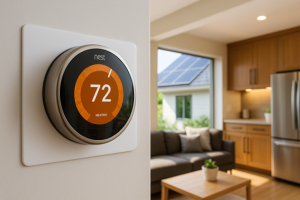
High energy bills are often due to inefficient heating and cooling systems that run when you’re not at home. Many households unknowingly heat or cool empty rooms, which not only wastes money but also contributes to unnecessary carbon emissions. I used to set my old thermostat and forget about it, only to see my bills climb in winter and summer.
Installing a smart thermostat solves this problem by automatically adapting to your schedule. Studies show that smart thermostats reduce heating and cooling costs by 10–20 percent. Brands like Ecobee and Nest learn your habits and adjust temperatures when you’re away or asleep. They also provide energy reports so you can track usage and optimize savings. When choosing a smart thermostat, look for models with geofencing and compatibility with your HVAC system, and take advantage of utility rebates to offset the cost. Visit Amazon to check these out.
2. Switch to LED Lighting and ENERGY STAR Appliances
Traditional incandescent bulbs and outdated appliances guzzle electricity. In my early twenties I had no idea that lighting could affect my energy bill until I switched to LEDs. LED bulbs use up to 75 percent less energy than incandescent bulbs and last far longer; Read more here. You can then go further to pair them with ENERGY STAR rated appliances for even bigger savings. ENERGY STAR washing machines use 30 percent less water and half as much energy as conventional models, while ENERGY STAR dishwashers reduce water use by 18 percent and energy use by 10 percent.
Upgrading your fridge, washer, or dishwasher may require an upfront investment, but rebates and lower utility bills quickly offset the cost. When I replaced my kitchen lights and appliances, my electric bill dropped noticeably, and I never looked back. [Insert affiliate link]
3. Install Low‑Flow Fixtures to Conserve Water

Water waste is another budget killer which is heavily overlooked by so many people, especially in 1st world countries. Older faucets and showerheads can use twice as much water as modern models. Before upgrading my fixtures, I assumed my water bill was fixed. Then I learned that modern faucets use 40 percent less water than pre‑1995 faucets, which is a hugely significant percentage and low‑flow showerheads cut water usage for showers in half. Dual‑flush toilets can use as little as 1.3 gallons per flush.
So it is really a no brainer; Swapping out old fixtures takes only minutes but yields long‑term savings on both water and energy. I installed a Moen WaterSense‑certified showerhead in my bathroom and saw my water consumption drop immediately. Look for fixtures labeled WaterSense, and consider a dual‑flush conversion kit to update existing toilets.
4. Start Composting to Reduce Food Waste

Food waste isn’t just an environmental issue, it drains your budget. Over one‑third of food produced in America is wasted, amounting to 73–152 million metric tons each year. When food decomposes in landfills it generates methane, a potent greenhouse gas, while you’re still paying for groceries you throw away.
Composting turns kitchen scraps into nutrient‑rich soil and reduces waste. I began with a countertop compost bin and was surprised by how much less trash I generated. There are options for every living situation: compost tumblers work for small outdoor spaces, while electric composters like the Vitamix Food Cycler quickly turn scraps into compost indoors. If you garden, you can use the compost to enrich soil; if not, many community gardens or municipal programs accept compost. By giving your food waste a second life, you’ll save on fertilizer and reduce landfill emissions. Here is a video of a user getting the best out of the product.
5. Harvest Rainwater for Your Garden
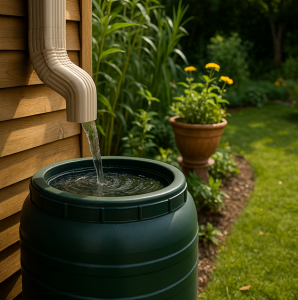
Outdoor watering can consume up to 30 percent of a household’s water use, and water rates continue to rise. Instead of letting rainwater run off your roof, collect it in a barrel and use it to irrigate your garden. Rainwater harvesting reduces demand on municipal supplies and provides free water for plants.
I installed a rain barrel with a downspout diverter and now have a ready supply of water for my herb garden. Basic rain barrels start at around $100 and include mosquito screens and overflow valves. Some cities offer rebates or even free barrels to encourage conservation. Make sure to place your barrel on a stable platform and use the collected water within a week to prevent stagnation. This simple upgrade pays dividends during hot summers when water restrictions are in place. [Insert affiliate link]
6. Furnish With Sustainable and Upcycled Materials
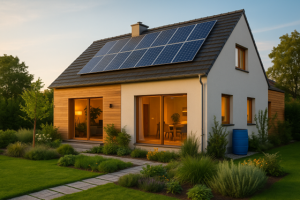
Furnishing a home sustainably doesn’t mean sacrificing style. Traditional furniture production often relies on virgin timber and petroleum‑based materials, contributing to deforestation and pollution. Meanwhile, vintage and upcycled furniture is surging in popularity—61 percent of millennials say they’re interested in these sustainable options. When I moved into my current home, I hunted for pieces made from reclaimed wood and quickly realized how unique and affordable they were.
Upcycling gives old items new life and keeps them out of landfills. Look for local artisans who refurbish furniture or check platforms like Etsy for handmade pieces. If you prefer new items, choose products certified by the Forest Stewardship Council (FSC) or made from rapidly renewable materials like bamboo. Not only do these materials reduce environmental impact, they also add character and warmth to your space. [Insert affiliate link]
7. Embrace Biophilic Design With Indoor Plants

Feeling disconnected from nature is common in urban living, yet bringing the outdoors in can boost well‑being. Biophilic design incorporates natural elements, plants, daylight, water, to improve indoor air quality and reduce stress. More than 60 percent of homeowners want to include natural elements in their homes.
When I filled my living room with houseplants and opened up the curtains to let in more sunlight, I noticed improved concentration and mood. Plants like snake plants, pothos, and peace lilies are hardy and help purify the air. Pair them with natural materials like bamboo blinds or cotton rugs to create a calming atmosphere. You don’t need to buy dozens of plants at once—start with a few low‑maintenance varieties and watch your indoor jungle grow. [Insert affiliate link]
Why This Matters
Making smart, budget‑friendly upgrades does more than improve your home—it contributes to global climate goals. Americans could be wasting 10–20 percent of their annual energy spend when their homes aren’t energy efficient, which could equate to about $400 a year. Energy‑efficient windows and doors can save 13 percent on heating and cooling costs, while new lighting technologies reduce lighting energy usage by up to 75 percent. Sealing air leaks alone can save up to 30 percent annually.
Beyond energy, food production accounts for 26 percent of global emissions and livestock farming makes up more than half of those emissions. Food waste also consumes nearly a quarter of the world’s water supply. By composting and reducing waste, you’re helping to conserve water and cut greenhouse gases. Water‑efficient fixtures further reduce demand: modern faucets use 40 percent less water and low‑flow showerheads cut usage in half. These statistics show that small, affordable changes multiply into significant environmental benefits.
You can also take a look at our article which goes further to review and analyze the top 10 eco-friendly smart home gadgets to save money & energy.
Common Mistakes to Avoid
- Skipping a home audit: Many people invest in upgrades without identifying where their home is losing energy. Have an energy audit done first to pinpoint the most effective fixes.
- Overlooking rebates and incentives: Utility companies and governments offer tax credits, rebates, or free kits for eco upgrades. Always research available incentives before you buy.
- Buying overpriced gadgets: Don’t assume the most expensive product is the most efficient. Compare energy ratings and look for ENERGY STAR or WaterSense labels.
- Neglecting maintenance: Even the best products need upkeep. Clean your rain barrel, change filters on your HVAC, and inspect seals around windows and doors to keep them working efficiently.
- Ignoring lifestyle changes: Gadgets alone can’t solve everything. Turn off lights when you leave a room, air dry clothes when possible, and plan meals to avoid waste.
Conclusion
Building an eco‑friendly home on a budget is about smart choices, not expensive overhauls. By installing a smart thermostat, upgrading lighting and appliances, conserving water, composting, harvesting rainwater, choosing sustainable furniture, and embracing biophilic design, you can save money and reduce your environmental impact. These seven steps prove that sustainable living is accessible to everyone. Start with one upgrade this week and experience how small changes add up. Your wallet, your health, and the planet will thank you. For more tips, subscribe to my newsletter and explore my recommended eco‑friendly products [Insert affiliate link].
FAQ
Q: What are the most cost‑effective eco‑friendly home upgrades?
A: The most cost‑effective eco‑friendly home upgrades are those that save you money immediately, such as installing LED lightbulbs, switching to low‑flow showerheads, and using a smart thermostat. These upgrades reduce utility bills and have short payback periods.
Q: Do smart thermostats really save money?
A: Yes. Studies show that smart thermostats reduce heating and cooling costs by 10–20 percent. They learn your schedule, adjust temperatures when you’re away, and provide energy reports so you can optimize usage.
Q: Are low‑flow fixtures worth the investment?
A: Absolutely. Modern faucets use 40 percent less water and low‑flow showerheads cut water usage in half. These simple swaps quickly pay for themselves through lower water bills.
Q: How can I afford eco‑friendly home upgrades on a tight budget?
A: Start with the smallest changes—LED bulbs, aerators for faucets, and a basic compost bin are inexpensive. Look for utility rebates and government incentives to help cover the cost of larger upgrades like smart thermostats and ENERGY STAR appliances.
n your schedule, adjust temperatures when you’re away, and provide energy reports so you can optimize usage.
Q: Are low‑flow fixtures worth the investment?
A: Absolutely. Modern faucets use 40 percent less water and low‑flow showerheads cut water usage in half. These simple swaps quickly pay for themselves through lower water bills.
Q: How can I afford eco‑friendly home upgrades on a tight budget?
A: Start with the smallest changes—LED bulbs, aerators for faucets, and a basic compost bin are inexpensive. Look for utility rebates and government incentives to help cover the cost of larger upgrades like smart thermostats and ENERGY STAR appliances.

